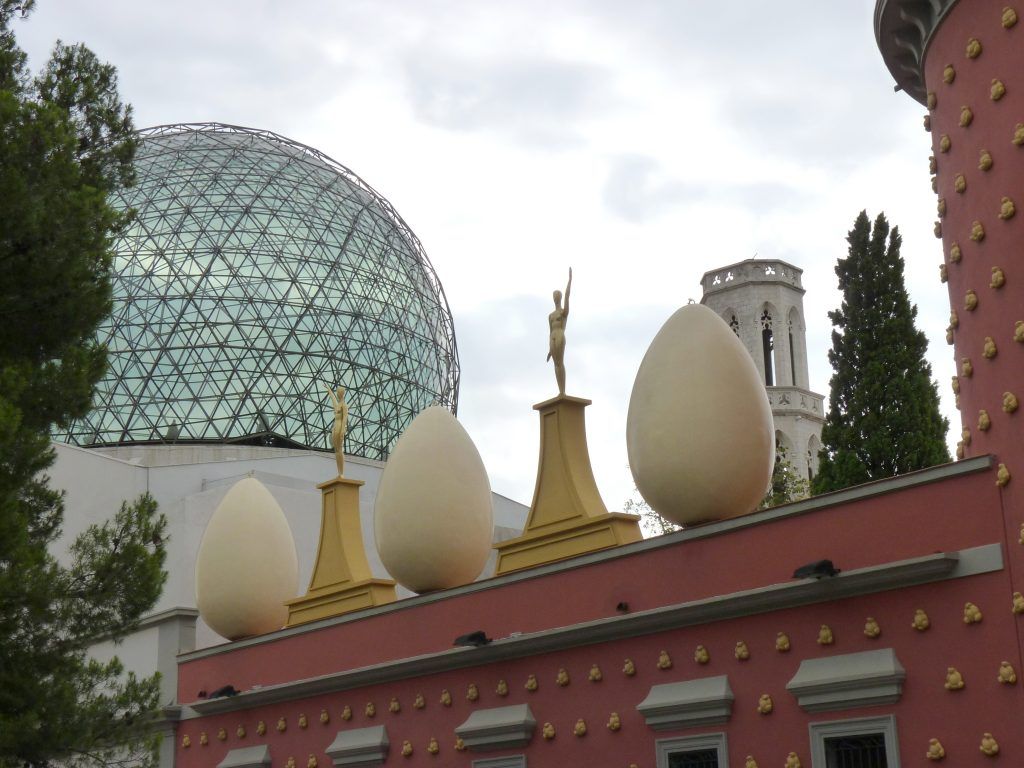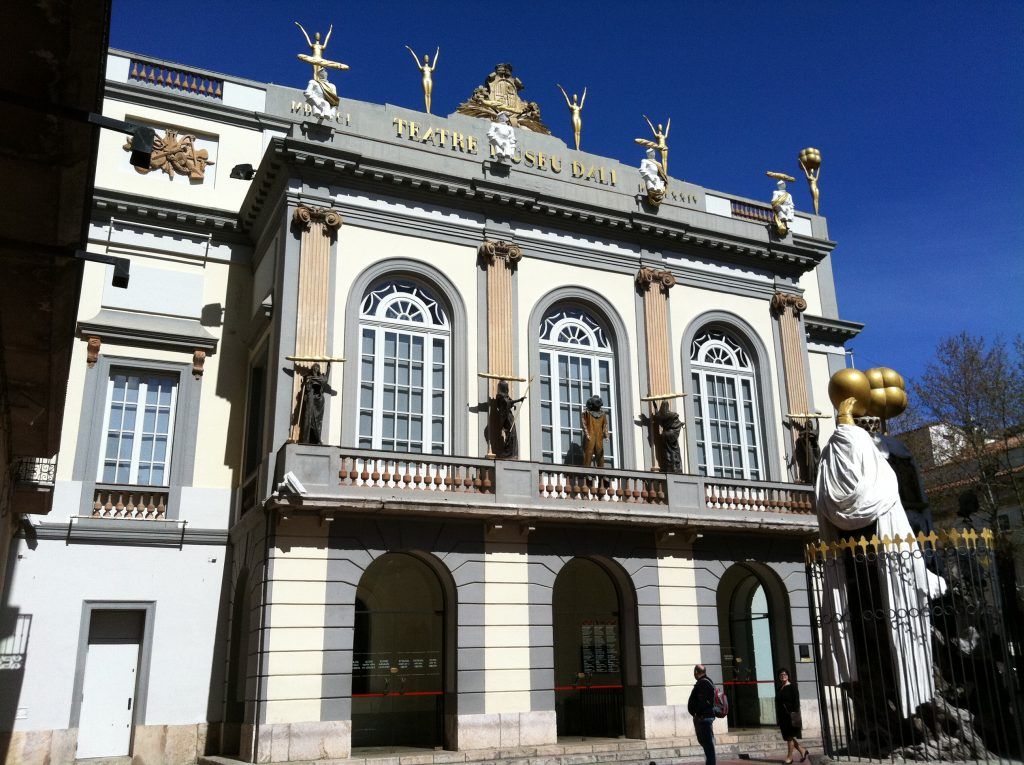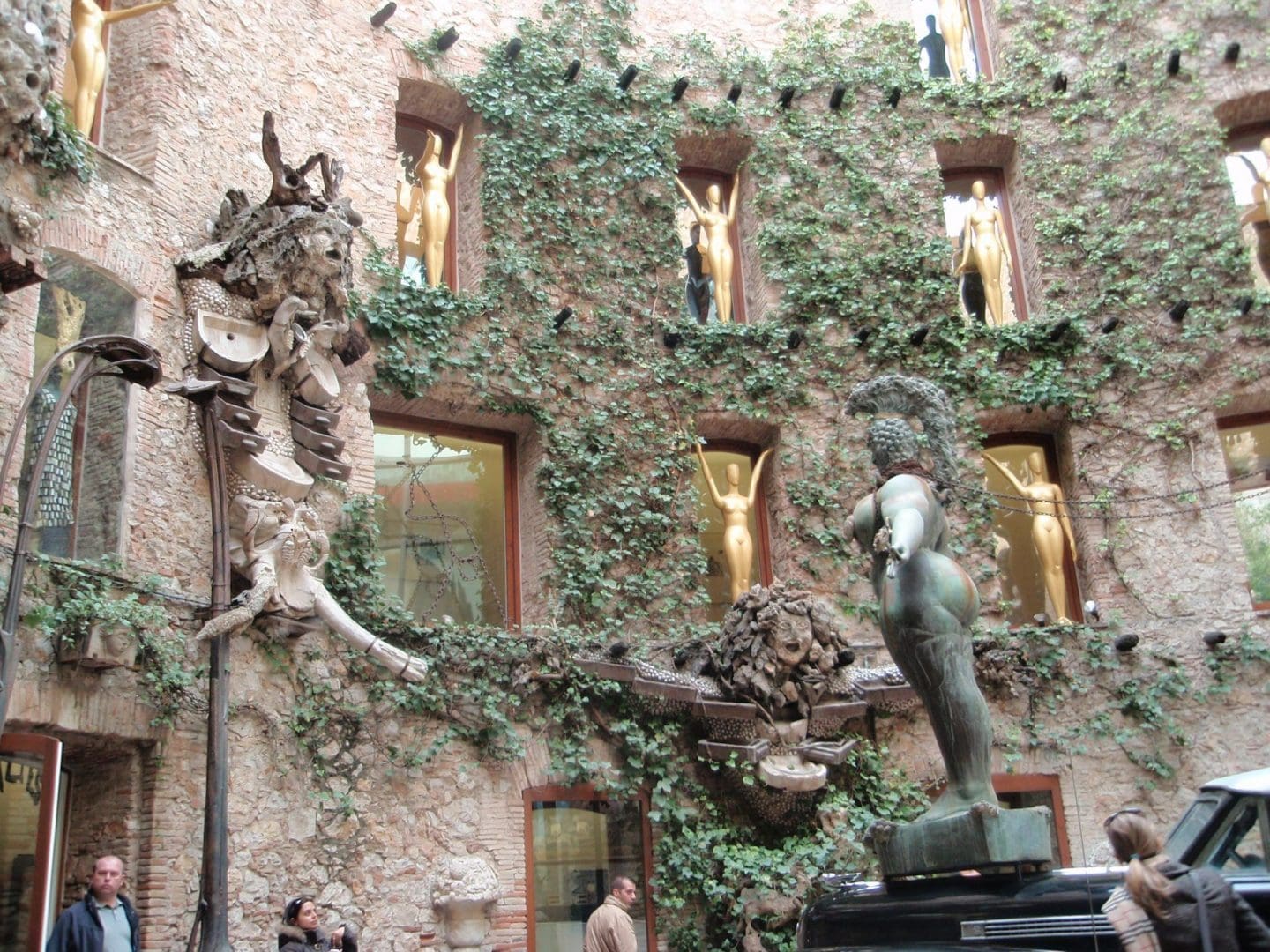The Spanish Citadel Of Surrealism
Q: How many Surrealists does it take to change a lightbulb?
A: No tomatoes.
A 20th century joke to explain the 20th century phenomenon of Surrealism – which was the more public-friendly follow-up to Dada, in a similar way to how New Romantics followed on from Punk Rock. As the name suggests, Surrealism was the same rejection of the orthodox as Dada, but which focused more on dream or nightmare-like visions than on anti-social disruption. The core essence was the same, but the emotion behind it had changed from anger to fun. And the playful king of these bizarre visions was a Spaniard by the name of Salvador Domingo Felipe Jacinto Dalí i Domènech; more commonly known as Salvador Dali. Dali’s technical painting skill and truly imaginative bending of reality saw him become so popular that it was rare to enter any 20th century Uni student’s flat without spotting at least one Dali poster in the lounge, kitchen or bathroom.

Image: Grondin
He was so much fun he became the very personification of ‘art’ in the 20th century with his wacky moustache that was waxed to point up at 45o at either end, amusing public appearances and anti-establishment antics such as pre-signing canvases that his students could later use to paint in his name. To get a taste of his unique brand watch the cheesy 50s American game show “What’s My Line?” on YouTube when several blindfolded B-List celebs have to guess who he is from his answers to their questions. Dali confuses them all by answering ‘yes’ to their queries as to whether he is an artist, politician, leading man, writer or sportsman, because Dali genuinely saw himself as all of the above. Yet he was hated by his fellow Spanish artists, especially Pablo Picasso who refused to even acknowledge Dali’s existence, due to his open support for General Franco’s Nationalist Spain. An enormous and constantly challenging personality, the closest thing to Dali now would be Banksy for his popularity or Lady Gaga for her beef dresses.
DALI THEATRE AND MUSEUM
Dali is best known for his paintings but, like many other 20th century artists, he did dabble in other media too. You could even argue he used his appearance and personal appearances as a canvas for Surrealism – he better have been, otherwise he was a very crazy guy! But easily the largest Surrealist artwork he ever created, is the museum built in his honour in his home town of Figueres in Catalonia.
Originally the Municipal Theatre in Dali’s childhood, the building was trashed – as much of Spain was – during their Civil War and lay in ruins for a long time. In the 1960s, Figueres mayor Ramon Guardiola decided to revamp the old building into a museum dedicated to its favourite son. He asked Dali if he would donate an artwork to the project but was stunned by his reply. Dali said he wouldn’t just donate an artwork but an entire museum’s worth of art as; “Where, if not in my own town, should the most extravagant and solid of my work endure, where if not here? The Municipal Theatre, or what remained of it, struck me as very appropriate, and for three reasons: first, because I am an eminently theatrical painter; second, because the theatre stands right opposite the church where I was baptised; and third, because it was precisely in the hall of the vestibule of the theatre where I hosted my first exhibition.”

This prompt decision allowed freedom for the building to be developed into a legacy for both Dali and Surrealism right from the start and recycle its history as a theatre into a theatrical experience for the patrons. The philosophy behind it was spelled out by Dali himself; “It’s obvious that other worlds exist, that’s certain… these other worlds are inside ours, they reside on earth and are precisely at the centre of the dome of the Dalí Museum, which contains the new, unsuspected and hallucinatory world of Surrealism”.
Bold words yet they are completely backed up in reality – if such a word can be used in any way in relation to either Dali or his Museum. Even from the outside the building looks like something more comfortable in the pages of a comic book than on an actual street and inside… well, this is the one occasion when you are happy to have fellow tourists around – otherwise you might think you have completely lost your marbles. From a three-dimensional sculpture of Mae West that can only be seen from one angle to yachts suspended in space, walking around the Museum is the closest you’ll ever get to actually being in your dreams – while you are still awake. And that’s the whole point of it.
GETTING THERE
Figueres is a small (by Spanish standards) town about the size of our Hastings up in the north eastern corner of Spain near the border with France. The easiest way to get there is by riding an elephant with three hundred metre legs or flying in via a three-headed goose – it IS a Surrealist museum after all. But if those options are unavailable you can always catch a train. I went from Barcelona – a very highly recommended destination too – where I had a choice of two trains; the normal local chug-a-chug which stops at a station on the east side of the Figueres town centre; and the high-speed Perpignan-Barcelona LGV which has a station on the west side.
Top image credit: Jordiipa

